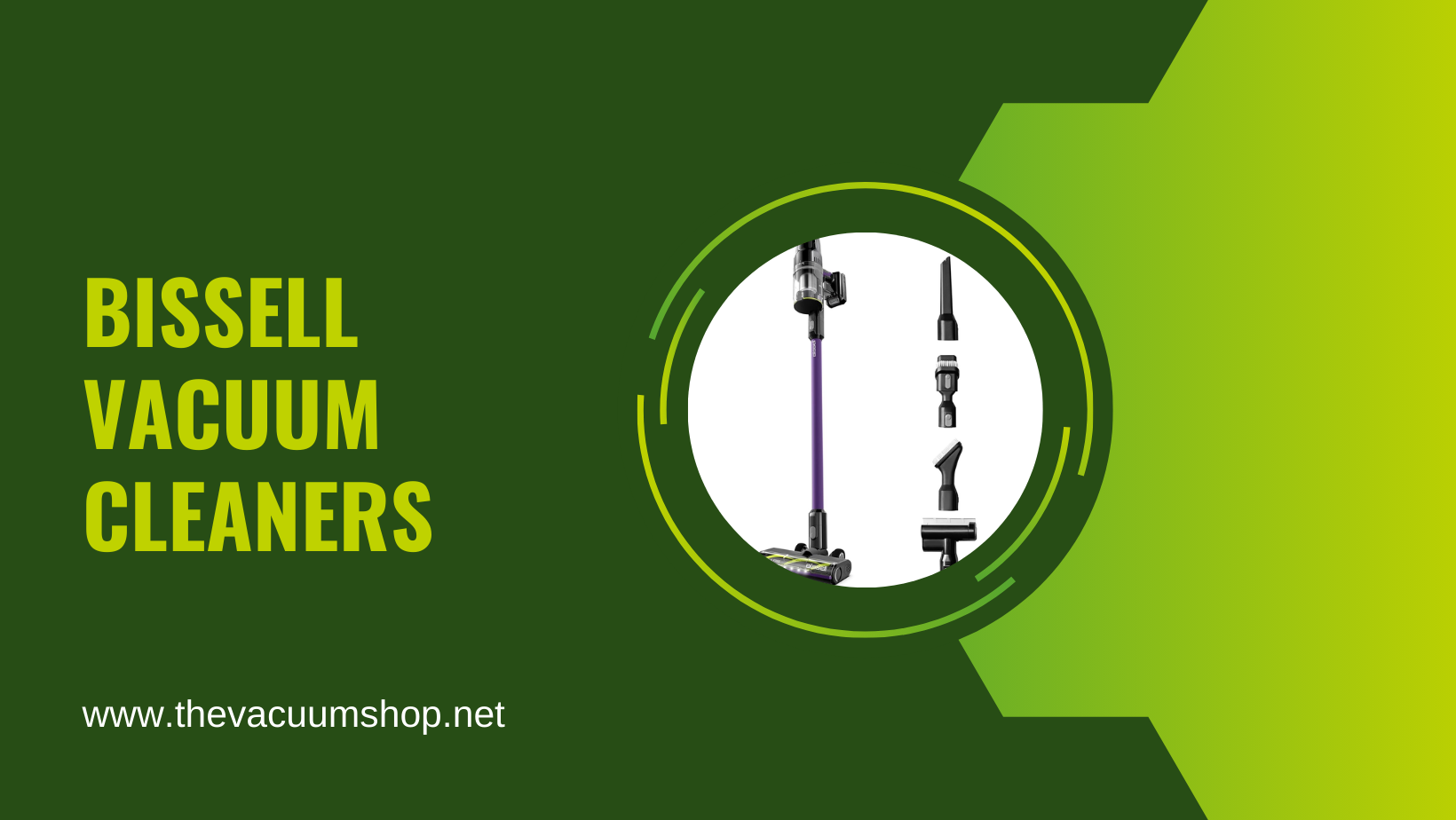
Bissell Hard Floor Expert Multi-Cyclonic Canister Vacuum: A Comprehensive Review
✅ Features of Bissell 1547 Canister Vacuum
The vacuum cleaner features Multi-Cyclonic Technology, promising excellent suction performance for extended periods. It boasts an 18-foot power cord and a 7-inch hose, coupled with a 9.2 amp power rating. Its cleaning path spans 11 inches, accommodating various floor types like carpet, hard floors, rugs, and more.
The appliance includes both a turbine foot, designed for gentle use on hard floors, and a multi-surface foot suitable for area rugs and carpets. A rotating brush system, visible through a clear window, aids in dirt removal.
The dirt tank offers easy, no-mess disposal with its bottom release design. It has a capacity of 67.6 fluid ounces. Finally, its compact and lightweight design ensures easy portability and storage.
✅ What we like about Bissell 1547 Canister Vacuum
The functionality of this product stands out, particularly its effectiveness on both laminate and hardwood floors. The canister is designed for easy removal, and the smooth cord retraction is a definite plus.
The suction power is a significant advantage. It performs well on both hard floors and carpets, proving capable of picking up debris that other vacuums often miss.
When it comes to cleaning ability, this vacuum excels. It is easy to clean and empty, and it's notably effective at picking up dust, cat hair, and litter.
The lightweight design contributes greatly to its usability. It's easy to carry and maneuver throughout the house, thanks to both the canister and the hose being lightweight.
Ease of use is another highlight. It's simple to operate around the house, with simple attachment points and an easy-to-empty canister.
Many customers have noted the quiet operation of this vacuum. Some even state that it's quiet enough to use at night without waking children.
The value for money is appreciated by some, especially those seeking an affordable option for cleaning wood floors.
Some customers appreciate the high quality of the product, noting the use of steel in certain parts, making it feel very solid and durable.
Many customers have mentioned its effectiveness on various types of floors, including hardwood, tile, and kitchen floors. It's also been praised for its ability to effectively remove pet fur.
✅ Key specs of Bissell 1547 Canister Vacuum
The Bissell HARD FLOOR EXPERT MULTI CYCLONIC canister vacuum boasts cyclonic technology and a cartridge filter. Included are the canister and brush attachments. It's a corded unit with a 1.6-liter capacity and operates at 9.2 watts, drawing 9.2 amps. The hose stretches to 5.8 feet, while the power cord extends to 216 inches.
This vacuum is designed for both hard floors and carpets, making it suitable for home use. It's a canister-style vacuum finished in a burnt orange color. The dimensions are 19.2"L x 12.9"W x 15"H, and it produces a noise level of 82 dB.
It's manufactured by BISSELL HOMECARE INC. and features a push-button touch control. This canister vacuum has one speed and one power level and is not portable, featuring one handle. It belongs to the 1547 series and is intended for indoor use.
The global trade identification number is 00011120225488, and the UPC is 011120225488. The item weighs 14 pounds, and its ASIN is B015OORUCW. It's made in China and carries the model number 1547.
Customer reviews average 4.0 out of 5 stars based on 1,723 ratings. Currently, it ranks #74 in canister vacuum cleaners within the Home & Kitchen category. This model is not discontinued.
Specific instructions recommend it for carpet, floor, and rug cleaning. Assembly is required, and it comes with a 2-year warranty. No batteries are required for operation.
✅ Comparison to similar models
✔ Bissell 1547 Canister Vacuum vs. Kenmore 81214 Canister Vacuum
When comparing the BISSELL 1547 and the KENMORE 81214 vacuums, it's clear that each has its strengths. The type of vacuum is a tie, as bagless (Bissell) offers convenience, while bagged (Kenmore) provides better allergen control with its HEPA filter. The Bissell scores a win in weight, being significantly lighter at 14 pounds compared to the Kenmore's 22.6 pounds, making it easier to carry and maneuver.
However, the Kenmore pulls ahead with its longer cord (24 feet vs. Bissell's 18 feet) and hose (9.3 feet vs. Bissell's 5.8 feet), providing extended reach. The Kenmore also boasts a much larger dust capacity, estimated around 9 Liters versus the Bissell's 1.6 Liters, meaning less frequent emptying. Kenmore's HEPA filter is also a clear advantage for allergy sufferers.
Looking at power, the Kenmore has a higher wattage at 120 watts, which could translate to stronger suction. However, the Bissell, with its 9.2 Amps, potentially has a stronger suction power for its wattage, assuming the Kenmore has a similar or lower amperage. The Kenmore operates more quietly at 78 dB compared to the Bissell's 82 dB.
The Kenmore comes with more attachments for versatile cleaning and offers two speeds for better control. Special features such as automatic cord rewind and HEPA filter also favor the Kenmore. The Bissell wins on product dimensions, being more compact for easier storage.
Customer ratings slightly favor the Kenmore (4.1 out of 5 stars with significantly more ratings). The Bissell has a slightly better warranty of 2 years compared to Kenmore's 1 year. Both can work on Floors, Carpets and Rugs. Kenmore can be moved around while Bissell cannot. Kenmore has 4 wheels for easier maneuverability.
Ultimately, determining the better vacuum depends on the price of each which would be important for the final decision.
✔ Bissell 1547 Canister Vacuum vs. TASKI D7524261 Canister Vacuum
TASKI emerges as the winner due to its brand reputation for commercial-grade equipment. It also boasts superior special features such as Eco mode, low noise operation, and ergonomic design. The HEPA filter further solidifies TASKI's lead, offering more effective fine particle trapping compared to Bissell's cartridge filter. The inclusion of a disposable fleece bag, metal telescoping tube, angled plastic tube, premium roller nozzle, pre-motor filter cloth, and exhaust filter means the TASKI comes with a more comprehensive set of attachments.
While both vacuums are corded, TASKI's larger capacity is a significant advantage, reducing the frequency of emptying. Its higher wattage translates to more power. Although both are recommended for similar uses (Carpet, Bare Floor) and share a cannister form factor, the TASKI is superior.
The Bissell takes a point in product dimensions due to its more compact size, but TASKI compensates with a significantly quieter operation, especially in Eco mode, and convenient foot controls. Despite Bissell having a lower amperage rating and lighter weight, TASKI earns higher customer review scores. The TASKI also offers the convenience of no assembly required.
Bissell has Hose Length and Cable length included on the details, while TASKI did not provide information on it. TASKI again wins on the other features since it has more options (2 speeds and 2 power levels).
✔ Bissell 1547 Canister Vacuum vs. Kenmore BC3005 Canister Vacuum
Both Bissell and Kenmore are established brands, making the brand comparison even. However, when it comes to special features, Kenmore edges out Bissell. Its inclusion of HEPA filtration, alongside being lightweight and maneuverable, gives it a distinct advantage. The HEPA filter is far superior to the cartridge filter found in the Bissell for trapping fine particles and improving air quality, further solidifying Kenmore's lead in this category.
The included components also tilt the scales in Kenmore's favor. The crevice tool, bare floor tool, upholstery brush, and two HEPA bags offer more versatility compared to just the canister and brush included with the Bissell. While both are corded, and thus even in that aspect, the Bissell has a slightly clearer description of dirt cup capacity than the Kenmore's weight listing, which can be easily misinterpreted.
In terms of power, Kenmore takes the lead with a higher wattage (210 watts vs. 9.2 watts for the Bissell), suggesting stronger suction. The Kenmore also boasts a significantly longer hose (26 feet vs. 5.8 feet), providing extended reach. However, Bissell counters with a much longer cable length (216 inches vs. 26 inches), offering more flexibility in terms of power outlet placement.
The Kenmore vacuum is recommended for a broader range of uses, including carpet, hard floor, upholstery, bare floor, car, and furniture, compared to the Bissell's focus on hard floors, carpet, and home cleaning, giving it an advantage in overall versatility. The form factor is even since both are canister vacuums, and color preference is subjective. While the Bissell is more compact in dimensions (19.2"L x 12.9"W x 15"H vs. 17"L x 13"W x 26"H) for easier storage, the Kenmore operates at a lower noise level (78 dB vs. 82 dB).
The Kenmore vacuum has higher amperage (12 Amps vs. 9.2 Amps), often associated with more powerful performance, and a wider cleaning path width (14 inches vs. 11 inches), allowing it to cover more area with each pass. The Bissell, being lighter (14 pounds vs. 19.29 pounds), might be slightly easier to maneuver for some users.
Customer reviews strongly favor the Kenmore, with a slightly higher rating (4.1 out of 5 stars vs. 4.0 out of 5 stars) and a much larger number of ratings (12,054 vs. 1,723), indicating greater overall customer satisfaction. However, the Bissell provides a longer warranty period of 2 years, compared to Kenmore's 1-year warranty. Finally, Kenmore's use of HEPA bags, as opposed to Bissell's bagless design, further contributes to its superior filtration capabilities.
✔ Bissell 1547 Canister Vacuum vs. Kenmore 22614 Canister Vacuum
When comparing the Bissell 1547 and the Kenmore 22614 canister vacuums, both brands hold a reputable standing, resulting in a tie. However, Kenmore edges out Bissell in terms of special features due to its HEPA filter and bagless design, offering more advanced filtration capabilities. This advantage is further reinforced by the filter type, where Kenmore's HEPA filter surpasses Bissell's cartridge filter due to its superior allergen and particle capture.
Both vacuums are corded, leading to another tie. Bissell takes the lead in capacity with its 1.6-liter dirt cup, which is considered a good size for collection. Kenmore's wattage is significantly higher at 120 watts compared to Bissell's 9.2 watts, generally indicating more powerful suction.
In terms of hose and cable length, Bissell gains an advantage as its 5.8-foot hose and 216-inch cable offer greater reach and convenience. Bissell also is more versatile with recommended use as it handles both hard floors and carpets, where Kenmore is recommended for carpets.
The Bissell vacuum is lighter at 14 pounds, making it easier to carry and maneuver compared to Kenmore's 22.4 pounds. Kenmore is quieter, registering at 75 dB, in comparison to Bissell's 82 dB. While Bissell has a higher amperage at 9.2 Amps, which can generally correlate with greater power, Kenmore's best seller rank as #45 surpasses Bissell's rank of #74.
In terms of customer reviews, Bissell has a slight advantage with more reviews which can indicate greater usage. Bissell is more compact, and without price information, a price comparison is not possible, resulting in a tie in this category.
✔ Bissell 1547 Canister Vacuum vs. Eureka NEN186BL Canister Vacuum
Let's break down the Bissell 1547 versus the Eureka NEN186BL. Brand preference is a personal choice, so no clear winner there. However, the Eureka boasts more appealing special features like automatic cord rewind, lightweight design, compact size, bagless operation, and a HEPA filter, giving it a definite edge. The HEPA filter alone is a significant advantage for allergy sufferers. The Eureka also comes with more included components like a dusting brush, accessory kit, and crevice tool, offering greater versatility.
Neither vacuum is cordless, resulting in a tie in that category. But the Eureka shines again with a larger 2-liter dust cup, meaning less frequent emptying. The Eureka also boasts a significantly more powerful 1000-watt motor, and a slightly longer hose for extended reach. The Bissell pulls ahead with a longer 18-foot cord, providing a greater cleaning radius.
The Eureka offers a broader range of recommended uses, including cars and garages, making it more versatile. Both are canister vacuums, so that's a draw. When it comes to size, the Bissell is more compact. Noise levels are identical at 82 dB. The Bissell has more powerful amps. Both vacuums include 1 item. Both products are canister vacuums so it's a tie. The Eureka is portable, which is a nice feature. The Bissell is lighter at 14 pounds.
Looking at customer feedback, the Eureka wins by a landslide. It has a higher rating (4.2 stars versus 4.0) and a vastly larger number of reviews, suggesting greater customer satisfaction. The Eureka also holds a much better best seller rank, indicating higher popularity. The Bissell offers a 2 year warranty while Eureka offers none. Without knowing the price, it's impossible to make a final call on overall value.
✔ Bissell 1547 Canister Vacuum vs. Kenmore DC5070 Canister Vacuum
When comparing the Bissell 1547 and the Kenmore DC5070 canister vacuums, it's a close call, with each having its strengths. Brand preference is subjective, resulting in a tie. However, the Kenmore edges ahead with its superior special features, including the Hair Eliminator Brushroll, 2-Motor System, HEPA Filtration, and Auto Cord Rewind, making it more advanced.
HEPA filtration in the Kenmore is a clear win for allergy sufferers, providing better air quality compared to the Bissell's cartridge filter. The included components are a matter of personal preference, leading to a tie, as some may value the Bissell's brush, while others prefer the Kenmore's crevice and combo tools. Both vacuums are corded, rendering the cordless feature irrelevant.
The Bissell boasts a larger dust cup at 1.6 Liters compared to the Kenmore's 1.2 Liters, requiring less frequent emptying. However, the Kenmore shines with its significantly longer hose (24 feet vs. 5.8 feet) and cable (24 feet vs. 18 feet), offering greater reach and maneuverability. Both vacuums are suitable for hard floors and carpets, and are of a canister form factor, resulting in ties. Color is subjective, leading to another tie.
In terms of dimensions, the Bissell is shorter, making it easier to store, while the Kenmore's noise level is unknown, giving the Bissell the advantage, assuming lower noise is preferred. Amperage is unknown for the Kenmore, resulting in a tie. The manufacturers are different, leading to a tie based on brand preference. Both contain one item, are push-button operated, touch controlled, have one handle, and one power level.
Kenmore has a more descriptive style with "Hair Eliminator Bagless Canister" and is considered more "portable" (easier to carry). Bissell is lighter at 14 pounds compared to the Kenmore's 19.16 pounds, making it easier to carry and maneuver.
Customer reviews slightly favor the Kenmore with a higher rating and more reviews, suggesting slightly better customer satisfaction. The Kenmore also has a better best sellers rank, indicating better sales performance. The Bissell is not discontinued, while the Kenmore's status is unknown. Specific use instructions cannot be compared, resulting in a tie. Bissell requires assembly. Bissell has a 2-year warranty, while the Kenmore's warranty is unknown.
✅ Conclusion
The Bissell Hard Floor Expert Multi-Cyclonic canister vacuum presents a compelling option for those seeking an affordable and versatile cleaning solution, particularly for homes with a mix of hard floors and area rugs. Its multi-cyclonic technology delivers consistently strong suction, effectively tackling dust, debris, and pet hair on various surfaces. The lightweight design and easy-to-empty dirt tank enhance usability, while the quiet operation is a definite bonus. While the 4-star rating suggests some room for improvement, the positive feedback regarding its cleaning power, ease of use, and value for money make it a worthwhile consideration for budget-conscious consumers looking for a reliable vacuum cleaner.

Hi, I'm Hannah! Welcome to my corner of the internet dedicated to helping you find the perfect vacuum cleaner for your home. As a passionate blogger and vacuum enthusiast, I've spent countless hours researching, testing, and reviewing a wide range of models. Whether you're tackling pet hair, deep cleaning carpets, or maintaining hardwood floors, I'm here to provide you with unbiased information, expert advice, and comprehensive buying guides. Let's find the vacuum that effortlessly transforms your cleaning routine!


